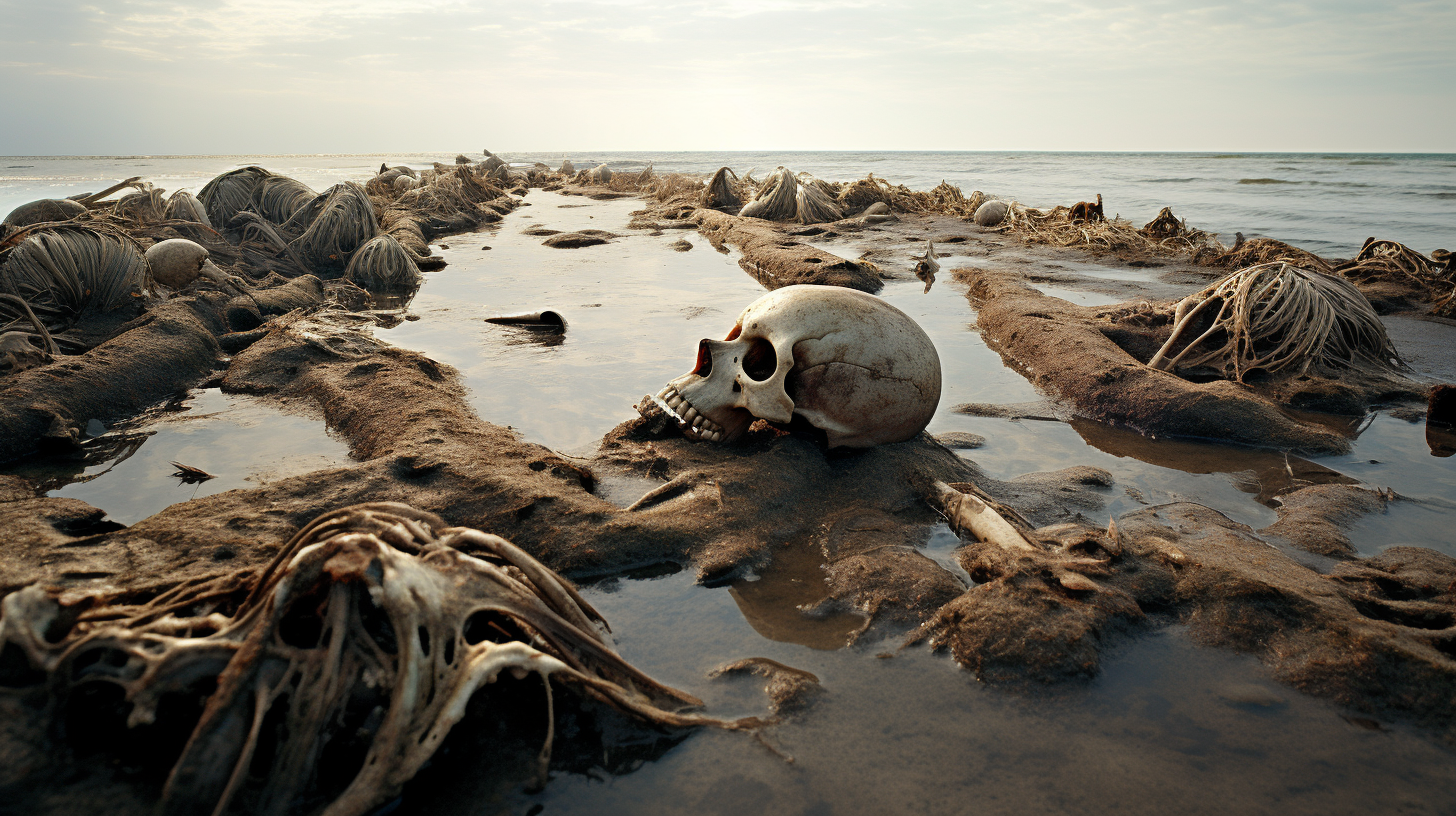In an era marked by profound silences, where the once vibrant symphonies of marine life have been muted, Ocean Graveyards brings to the forefront the grim reality beneath the waves—recounting tales of the vast marine extinctions shaping our somber seascape.
The ocean, a colossal expanse once teeming with a dizzying array of creatures, has now become an aqueous catacomb. The evidence? An ever-growing collection of vacant eyes and still fins, the remnants of species now mere whispers of existence. Our marine biologists, now more akin to historians, tell of the great coral graveyards where neon undersea metropolises turned pale and crumbled.
Immeasurable Loss
It begins with the smallest—the zooplankton, cornerstone of the food web, their numbers dwindling until larger dependents found themselves starving. Then came the shellfish, their calcified homes dissolved by the increasingly acidic waters. The ripples of disruption caused commercial fish stocks to vanish, leaving nets perpetually empty—and coastal communities destitute.
The Silent Witnesses
We’ve catalogued cemeteries where whales, the once-majestic ocean giants, beached in numbers to escape the toxicity of their liquefied habitat. Dolphins, too, no longer chortle and chirp in jubilant pods; they surface briefly as if gasping for a bygone era before disappearing into the fathomless dark.
Even the relentless shark, nature’s perfect predator, succumbs to the perversion of their environments, floating abyss-bound—their grey suits the last glimpse of a feared and respected dynasty.
Abyssal Effigies
A profound sense of loss accompanies the exploration of sunken cities, where marine creatures once sought refuge in the shadows of human structures. The steel skeletons of oil rigs, once stalwarts of industry, are now lifeless monoliths, corroded by time and neglect. The seabed, woven with cables and pipelines, once pulsated with human ingenuity; now, mere relics of purposes outlived, casting long, cold shadows over the barren sands.
The Final Act
Our collective disregard has scripted the ocean’s final act. And in this dismal play, plankton blooms choke the life from already suffocating waters. Dead zones proliferate, and the ocean’s role as Earth’s life support fades like the last flickers of bioluminescence from an extinguished deep-sea anglerfish.
An Unforgivable Deafness
We stood deaf to the ocean’s pleas, the warnings of conservationists and oceanographers unheard over the cacophony of corporate greed and political short-sightedness. As the marine dominion crumbles, one can almost hear Poseidon’s lament—an echo of remorse for what might have been if only humanity had listened.
In Ocean Graveyards, we document not just the loss of marine biodiversity, but the loss of ourselves. For each extinct species reflects a missed chance, each silent stretch a testament to our own unravelling narrative. The once majestic and enigmatic ocean now serves as a poignant reminder of our legacy—one of neglect, where even the boundless sea could not escape the consequences of our actions.
We stare into the abyssal sepulchers of the deep, confronted by a mirror showing the ghost of nature’s immense prosperity. Here lies the requiem of the seas, a memorial not only to myriad lost species but also to human short-sightedness that foresaw this end yet did nothing to prevent it.
Let Ocean Graveyards be both a chronicling and a warning: as marine life gasps its last breath, it mirrors our own potential fate—an eternal silence that is not golden, but devastatingly grim.
